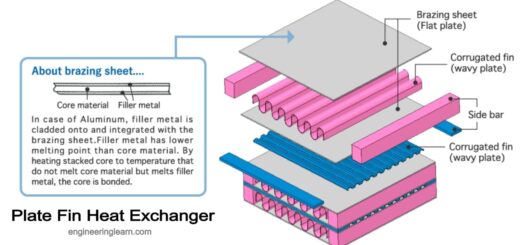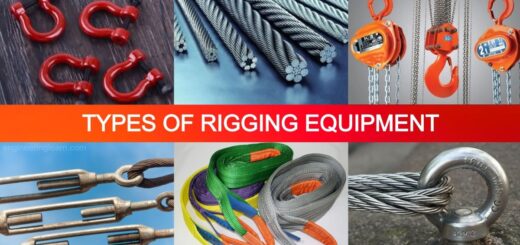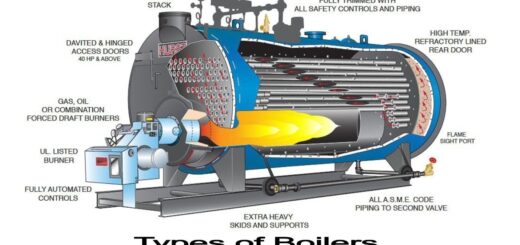15 Parts of Door Knob/Lock and Their Functions [With Pictures & Names]
![15 Parts of Door Knob/Lock and Their Functions [With Pictures & Names]](https://engineeringlearn.com/wp-content/uploads/2023/07/Parts-of-Door-Knob-1024x539.jpg)
15 Parts of Door Knob/Lock and Their Functions [With Pictures & Names]: – We’re so used to seeing door switches, door knobs, and various fixings that we don’t put or place a lot of thinking which is more rational. While there isn’t exactly a conspicuous clarification to pick one over the other, a few advantages and disadvantages may be reason enough for you to choose a door knob for your home renovation or redesign. Whether you are replacing a part on your lock or even inquisitive about how they work, understanding the parts of a door knob can be interesting and valuable for you.
What is a Door Knob?
A door knob or a round knob door lock is utilized to open up or shut a door. The standard door knob has a bolt or spindle going through it that rests basically over a round and hollow tube to which the spindle is joined or connected. Door knobs are ball-shaped or spherical gadgets that are utilized to open and even lock gates. The material selection and determination for door knobs may altogether influence or impact their strength, maintenance requirements, and aesthetic appeal. Most of these items are made of stainless steel, brass, or bronze, contingent upon the finish you like.
These materials, as a general, don’t rust and can be utilized for an extended period of time. Even the most basic design of the door knob can be equipped for adding a touch of style to your property. With the sheer amount of designs, styles, and finishes accessible and picking one that fits the style and appearance of your door and surrounding furniture is extensively simple.
Parts of Door Knob/Lock
These are the simplest and most common parts of standard door knobs. At the point when things are working right, nobody invests a lot of time contemplating the parts of a door knob. In any case, when your door isn’t locking, the knob isn’t behaving right, or you’re working on an update, knowing the parts that make a door knob work can be extremely convenient.
Below we should take a look at door knobs so that if you at any point need to work with one, you know how they work and which parts are probably going to require repair.
- Two Knob
- Trim or Rose
- Cylinder or Lock Body
- Strike Plate
- Cotter Pin
- Locks and Latches
- Back Plates and Rosettes
- Spindle
- Set Screws
- Spring Bolt
- Dead-latch/Deadlocking Plunger
- Lock and Bolt Mechanism
- Keyhole
- Thumb Turn
- Barrel Bolt
1. Two Knob: ( Parts of Door Knob)
Most door knobs have two knobs or handles, one or the other side of the door. Most of the manufacturers shape the knob and handles in manner that are decorative and practical. Most knobs have a round shape and most levers are long and flat, reaching out off the side of the door.The most well-known locking mechanism for standard exterior doors is the pin tumbler cylinder. The pin cylinder includes a cylinder with a bunch of pins.
Many manufacturers create a key to correspond with the pins. At the point when you insert or embed the key into the cylinder, the pins move to the right position and open the lock. Pin cylinders come in single and twofold rows. Single-row cylinders are normal for most standard door knobs. But you can look for a twofold row pin cylinder for high-security needs.
2. Trim or Rose: ( Parts of Door Knob)
The trim is one more part of metal that reaches out from the door and contains the key-way. It isn’t found in that frame of mind of a door lock however is usually tracked down in the round and hollow lock. It is placed before the door knob.
3. Cylinder or Lock Body: ( Parts of Door Knob)
The cylinder is the principal part of the door knob where we insert or embed the key. This cylinder is likewise called a lock body. The lock body comprises the all-out locking mechanism of the door lock. It comprises a spring and a few spring-loaded pins. To open the lock, we need to insert or embed the right key with the right pattern and in the correct direction. At the point when we insert the right key in the keyhole, the uneven edge of the key pushes the pin to fit the height of the key in the lock body. All pins move at the ideal locations, which causes the cylinder to open and permits the bolt to move. It causes the door to open.
4. Strike Plate: ( Parts of Door Knob)
A door strike plate is one of the essential parts of a common door locking system. A strike plate is a thin metal plate that installers join or interface to the door frame to create a reinforced hole or opening for the knob bolt to stretch out inside. This plate makes it more challenging for intruders to force open the door. The strike plate is one of the most apparently inconsequential parts of a door knob, yet it is vital to the good functioning of the door.
An absence of care in the installation of the strike plate can cause the door not to close appropriately. This will prevent it from locking well and reduces your home’s overall security. Strike plates assist to keep your door firmly closed. They keep it safely in place until a lever or knob is utilized to open the door.
5. Cotter Pin: ( Parts of Door Knob)
A cotter pin is a simple and straightforward fastener that is utilized to secure a bolt in place. It comprise of a U-shaped piece of metal, it’s inserted or embedded through the hole of a bolt, after which the ends are twisted together. Cotter pins work by forestalling the bolt in which they are inserted or embedded from coming out.
Obviously, not all bolts support the utilization of a cotter pin. Rather, you can insert or embed a cotter pin into a bolt in the event that the bolt has an hole in it. Without a hole, there’s no place to insert or embed a cotter pin. Its material is metal that goes through pressure applied from the spring.
6. Locks and Latches: ( Parts of Door Knob)
Door knobs include a wide variety of locks and latches. There are integrated locks that are important for the knob itself, and some of the time there is a lock, deadbolt, or latch somewhere else on the door. Inside, a door knob lock prevents the handle from turning. Later release the lock, and the knob further turns freely, permitting you to retract the bolt and open the door.
Dissimilar to door locks and latches which are designed for the home, business door latches and locks need to withstand more demanding and unpleasant circumstances. They are made of profoundly durable materials and give extraordinary security and connections.
7. Back Plates and Rosettes: ( Parts of Door Knob)
Back plates and rosettes play out a couple of roles They in some cases are essential for the mounting system for a door knob. Without a back plate and a rosette, you would see the exposed or uncovered wood as well as other material cut away to accommodate the installation of the knob. Rosettes and back plates can likewise add a bit of style to your door knob and different features of your door.
For example, you might see a rosette with a decorated design and a latch for locking the door. In some cases, back plates or rosettes match the trim of a door to minimize their appearance. At Different times they add contrast or character. For example, on some antique presentations, a darkly- colored wood door might have brass adornments.
8. Spindle: ( Parts of Door Knob)
The spindle connects or associates the knob to the latch or deadbolt mechanisms inside the door. The spindle locates or situates into the square holes or openings found at the rear of a set of door handles or door knobs. As you twist the knob, the spindle turns and moves the latch in a similar direction and opens it. Square spindles are the most widely recognized shape in standard door knobs. Some spindle models just serve one side of the door while others are fixed at one place and can’t be rotated or pivoted. In the event that you have an issue with any type of spindle of your door knob , then you can straightforwardly contact the specialists to resolve your issue.
9. Set Screws: ( Parts of Door Knob)
The set screw is indispensable and finds and secures the door knobs to the spindle, likewise engaging the lock when it is turned. Some door knobs have a totally hidden mechanism for installation and evacuation. Utilizing a screwdriver, or at times a unique tool permits you to loosen the knob so you can then eliminate it from the remainder of the assembly and work on the inner mechanism. Then, at that point, you can reattach the knob and re-tighten the set screw.
10. Spring Bolt: ( Parts of Door Knob)
The spring bolt or latch bolt is a spring clip that is utilized to hold the bolt in place. The spring-clip compresses, when the door is in the unlock or open position. It assists the bolt with moving in the lock body, which causes the door to open. While the spring releases, the spring retains its unique situation as already. The spring bolt automatically locks itself with practically no key while closing the door. This kind of locking mechanism is extremely valuable when we rush the leave the house and useful for individuals who forget to lock the door every time.
11. Dead-latch/Deadlocking Plunger: ( Parts of Door Knob)
A dead-latch or deadlock plunger is an additional security door knob mechanism on exterior door knobs. This small bolt sits on top of the knob bolt that stretches out into the door jamb or frame. This secondary bolt will open and close when you manipulate the knob, however, they are safer in light of the fact that they automatically lock when you close the door. Dead latches require a key or a thumb turn to open.
12. Lock and Bolt Mechanism: ( Parts of Door Knob)
Another important part of a door knob is Lock and bolt mechanism. To securely and safely hold a door closed, a bolt extends from inside the knob, out of the door, and into the door’s frame. The bolt mechanism itself retracts the bolt when you turn the knob, permitting the door to open up. It returns to its original position, when you release the door knob, retracting the bolt. Numerous knobs likewise have a lock that keeps the knob from turning when it’s engaged.
13. Keyhole: ( Parts of Door Knob)
A keyhole is one of the parts of a door knob that you can track down on some but not all doors. The keyhole has two fundamental components: the key-way and the tumbler mechanism. The key-way is the opening through which you insert or embed the key to open the door. The tumbler mechanism inside the knob is enacted when someone inserts or embeds as well as turns a key.
14. Thumb Turn: ( Parts of Door Knob)
Thumb turn locks, likewise called the turn and release locks, are sorts of locks that permit you to open and close doors from within a room without any problem. At the point when you rotate a thumb turn, it turns the spindle or shaft, shifting the position of the bolt. These are especially useful for rooms that require privacy and some degree of security, like washrooms and bedrooms. For safety and security reasons, just the interior side of the door knob has thumb-turn mechanisms.
15. Barrel Bolt: ( Parts of Door Knob)
The long metal cylinder in the horizontal direction is utilized in the barrel bolt. This mechanism is directed utilizing a thumb during locking or unlocking the door. Right when we lock the door, the barrel bolt connects with the hole or opening in the metal cavity, and when we unlock or open the door barrel bolt is really long from the face plate. These barrel bolts are utilized within the washroom door. Yet, this isn’t the ideal locking mechanism for an external lock on the grounds that the door breaks when somebody kicks the door hard.
Conclusion
Door knobs or handles are many times indispensable to the design of a building structure. Some new doors make a new doorknob installation easier for the homeowner. This is by a wide margin the most simple, easiest method for installing another door knob. On the off chance that those rough cuts aren’t pre-made, you’ll need to drill out an exact hole or opening for your door knob and the inner mechanism. That implies a hole or opening for the knob or handle through the door and a different hole through the door’s edge for the bolt.
From an external perspective, taking a look at a Doorknob, they might appear to be simple. If we talk about it internally, the parts that make them work are somewhat more complicated and convoluted. Be that as it may, they are normally something a homeowner can deal with and replace it whenever he needs them.
Image Source: – homenish













